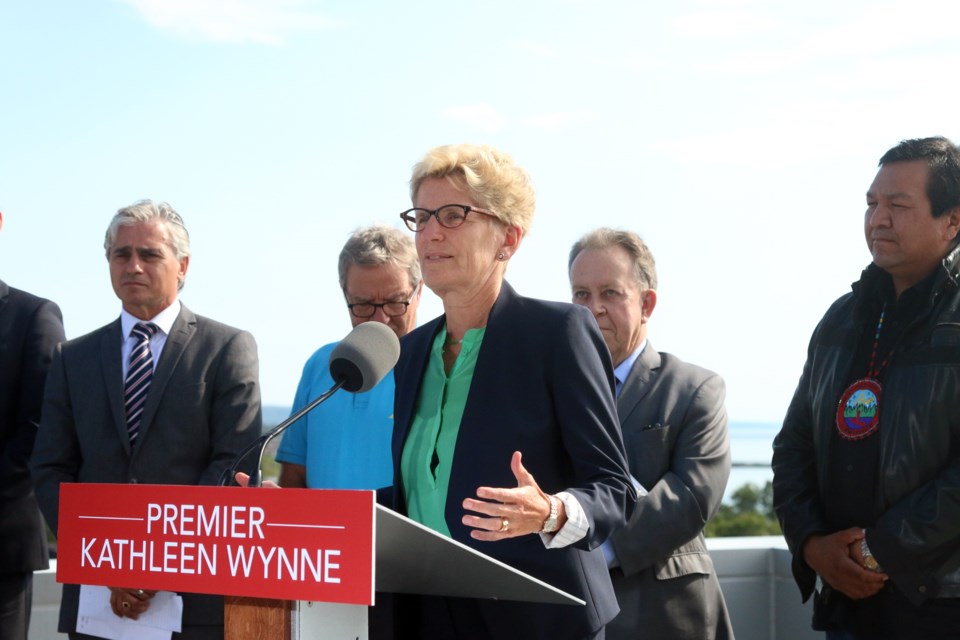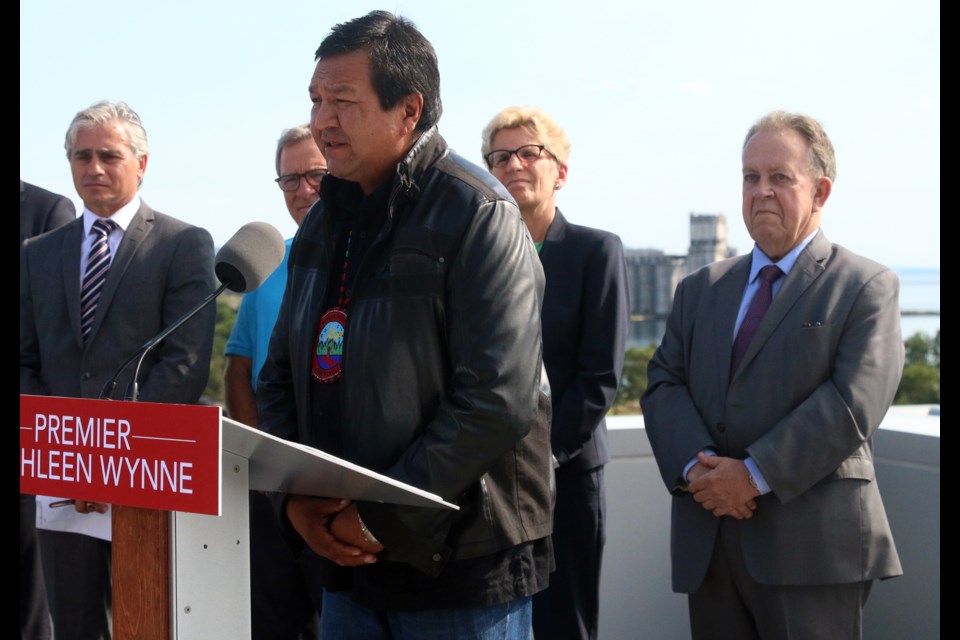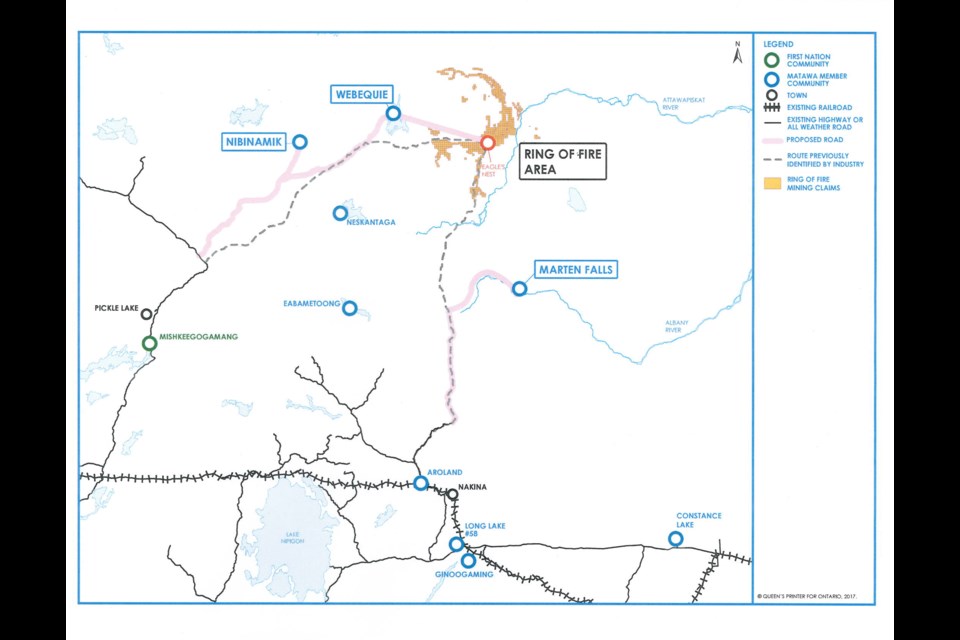THUNDER BAY - The Ontario government is preparing to take a big step forward in developing the Ring of Fire and providing year-round access to remote communities near the chromite-rich deposit.
Premier Kathleen Wynne was in Thunder Bay on Monday to announce the government is moving ahead with building an all-season access road to the Ring of Fire.
“We are moving forward with our plan to unlock one of our biggest mineral opportunities in almost a century and we are taking that step together with First Nations partners,” Wynne said during the announcement.
The road will connect Webequie, Marten Falls, and Nibinamik First Nations to existing provincial highways north of Pickle Lake and Aroland First Nation. Preliminary assessments will begin immediately and construction is expected to start in 2019.
Wynne did not have a dollar figure for the construction of the road, saying it will be part of the province’s $1 billion investment toward infrastructure for the Ring of Fire.
“You will know that this is geography that is not straightforward in terms of building a road, which will be many bridges and causeways because of the amount of water,” Wynne said. “It will be a couple of years at least, but we want to get moving as quickly as we can.”
The Ring of Fire mineral deposit is estimated to have a value of nearly $60 billion. A proposed mining development, located approximately 400 kilometres northeast of Thunder Bay, is being pursued by Noront Resources.
"Today's announcement is a major step forward for Noront as we prepare to develop our nickel and chromite deposits in the Ring of Fire," said Noront Resources CEO, Alan Coutts. "Establishment of a road network with agreement on industrial access is our most important project advancement milestone and we are very pleased to see it move ahead."
Wynne said an all-season access road to the Ring of Fire will be a game-changer for the communities in the area and the entire province.
“It will be built in a way that benefits those First Nations communities and provide those communities with all season links to our provincial highway network,” Wynne said.
Marten Falls First Nation Chief Bruce Achneepineskum said discussions have been ongoing for a number of years, but added that any development that takes place on Marten Falls' traditional territory needs to be done in the right way.
“It’s been a long few years,” he said. “A lot of meetings with industry and government to try and navigate to where we are today. I’m very glad to be here today to hear the premier’s commitment to moving ahead for our communities.”
Chief Cornelius Wabasse of Webequie First Nation said an all-season road is an opportunity for his community to prosper and address issues like the high cost of food and unemployment. But Wabasse said it will be a big change for the community and members need to be prepared.
“We have to make sure we have a level of adjustment there when we hit that big change,” he said. “There is the good, the bad, and the ugly stuff that is going to come into our community and we have to be prepared for that.”
First Nations have put forward a proposal and suggested a willingness to take ownership of the road. Wynne said the government will continue to work with them moving forward.
“There are lots of questions that remain to be answered, but what’s important is we have an agreement that this must go forward and we have a partnership that will allow us to answer those questions as we do the planning,” she said.
Wynne added that the leadership of Marten Falls, Webequie, and Nibinamik have been very forthcoming to work with the government and industry in moving forward and she said her government will continue to work with all First Nation communities in the region.








